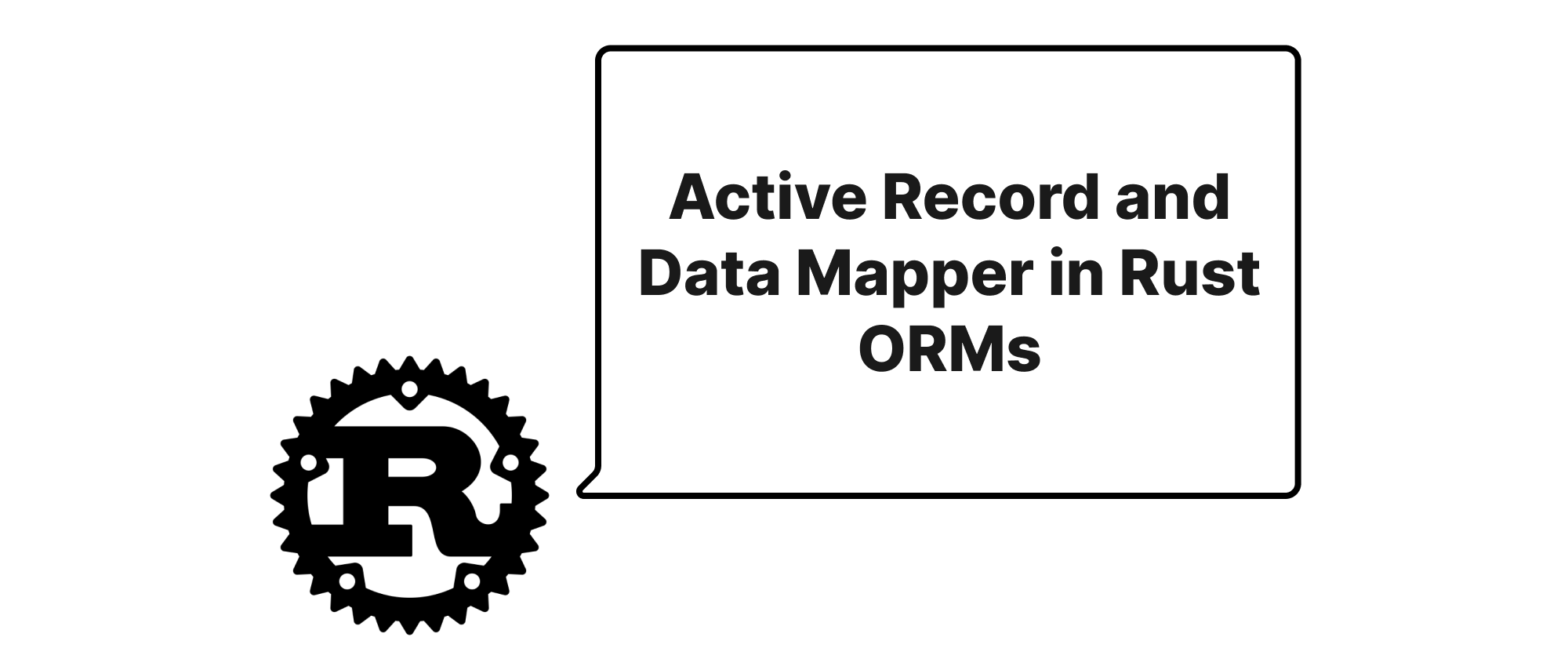Actix's Actor Model - A Web Request Panacea or Pitfall?
Lukas Schneider
DevOps Engineer · Leapcell

Introduction
In the rapidly evolving landscape of web development, performance, scalability, and maintainability are paramount. Rust, with its unparalleled promise of safety and speed, has emerged as a compelling choice for building robust web services. Among the various web frameworks in Rust, Actix-web stands out, largely due to its foundational reliance on the Actor model. This design choice often sparks a fervent debate: is Actix's Actor model the silver bullet for handling web requests, or does it introduce unnecessary complexity, potentially becoming a "poison" for developers? This article delves into this very question, exploring the nuances of Actix's approach and its practical implications for building high-performance web applications.
Demystifying the Actor Model in Actix
Before we dissect its application in web requests, let's establish a clear understanding of the core concepts.
Core Terminology
- Actor Model: A computational model where "actors" are the universal primitives of concurrent computation. Each actor is an independent computational entity that communicates exclusively by asynchronously sending and receiving messages.
- Actor: An entity that can:
- Receive messages and decide how to process them.
- Create new actors.
- Send messages to other actors.
- Designate its behavior when it processes the next message.
- Mailbox: A queue where messages sent to an actor are stored until the actor is ready to process them.
- Supervisor: An actor responsible for monitoring other actors (its children) and handling their failures, often by restarting them. Actix uses a hierarchical supervision approach.
- Message: An immutable data structure sent between actors. Messages are processed one at a time by an actor.
- Handler: A trait implementation in Actix that defines how an actor responds to a specific message type.
How Actix Leverages the Actor Model for Web Requests
Actix-web is built on top of actix, the actor framework. While actix-web itself might not expose actors directly for every incoming HTTP request, the underlying architecture heavily relies on them for managing state, resources, and long-running tasks.
Imagine a scenario where your web service needs to interact with a database, an external API, or perform complex background computations. Without actors, you might end up with mutexes, channels, or complex Arc<RwLock<T>> patterns to manage shared state across threads. The Actor model offers an alternative: encapsulate your state within an actor and communicate with it via messages. This eliminates direct shared memory access and the associated data races and deadlocks.
Consider a simple counter service as an example:
use actix::prelude::*; // 1. Define a message that the Counter actor will handle #[derive(Message)] #[rtype(result = "usize")] // Specify the return type of the message handler struct GetCount; #[derive(Message)] #[rtype(result = "usize")] struct Increment; // 2. Define the Actor struct Counter { count: usize, } impl Actor for Counter { type Context = Context<Self>; fn started(&mut self, _ctx: &mut Self::Context) { println!("Counter actor started!"); } } // 3. Implement Handlers for the messages impl Handler<GetCount> for Counter { type Result = usize; fn handle(&mut self, _msg: GetCount, _ctx: &mut Self::Context) -> Self::Result { self.count } } impl Handler<Increment> for Counter { type Result = usize; fn handle(&mut self, _msg: Increment, _ctx: &mut Self::Context) -> Self::Result { self.count += 1; self.count } } // How to use this in a web request handler: use actix_web::{web, App, HttpResponse, HttpServer, Responder}; async fn get_count_handler(counter: web::Data<Addr<Counter>>) -> impl Responder { match counter.send(GetCount).await { Ok(count) => HttpResponse::Ok().body(format!("Current count: {}", count)), Err(_) => HttpResponse::InternalServerError().body("Failed to get count"), } } async fn increment_count_handler(counter: web::Data<Addr<Counter>>) -> impl Responder { match counter.send(Increment).await { Ok(new_count) => HttpResponse::Ok().body(format!("New count: {}", new_count)), Err(_) => HttpResponse::InternalServerError().body("Failed to increment count"), } } #[actix_web::main] async fn main() -> std::io::Result<()> { // Start the Counter actor let counter_addr = Counter { count: 0 }.start(); HttpServer::new(move || { App::new() .app_data(web::Data::new(counter_addr.clone())) // Share the actor address .route("/count", web::get().to(get_count_handler)) .route("/increment", web::post().to(increment_count_handler)) }) .bind(("127.0.0.1", 8080))? .run() .await }
In this example, the Counter actor manages the count state. Web request handlers don't directly access count; instead, they send messages (GetCount, Increment) to the Counter actor's address (Addr<Counter>). The actor processes these messages sequentially, ensuring safe state mutation without explicit locks. This pattern is particularly useful for:
- Database connection pooling: An actor can manage a pool of database connections, and web requests send messages to get/release connections.
- Caching mechanisms: An actor can encapsulate a cache, handling put/get operations.
- Long-running tasks/background processing: Actors can offload heavy computations, preventing request handlers from blocking.
- Stateful websocket connections: Each websocket connection can be represented by an actor.
The Benefits: A Web Request Panacea?
- Concurrency and Isolation: Actors are inherently concurrent. Each actor processes messages one at a time, eliminating the need for explicit locks for internal state. This drastically simplifies concurrent programming and reduces the risk of deadlocks and race conditions.
- Scalability: By allowing independent actors to communicate asynchronously, the system can distribute work efficiently across CPU cores. Actors can be spawned and supervised dynamically.
- Fault Tolerance: The supervisor pattern allows for robust error handling. If an actor fails, its supervisor can restart it, potentially with a clean state, without affecting other parts of the system.
- Clear State Management: State is encapsulated within actors. There's no shared mutable state across threads in the traditional sense, making reasoning about data flow much easier.
- Asynchronous by Design: The message-passing paradigm naturally lends itself to asynchronous operations, fitting perfectly with Rust's
async/awaitecosystem.
The Drawbacks: A Potential Pitfall?
- Increased Indirection and Boilerplate: Simple operations might seem verbose due to message definitions, actor implementations, and handler traits. For trivial stateless request/response patterns, this can feel like overkill.
- Debugging Complexity: Tracing message flow between multiple actors can be more challenging than following a direct function call stack, especially in large systems.
- Learning Curve: The Actor model is a paradigm shift for developers accustomed to traditional OOP or functional programming. Understanding message types, addresses, and supervision can take time.
- Overhead for Simple Cases: For a web service that primarily performs CRUD operations directly on a database without complex shared state or background tasks, the overhead of the Actor model might outweigh its benefits.
- Performance Misconceptions: While actors enable high concurrency, the message passing itself has a cost. For CPU-bound tasks where direct function calls or shared memory (with careful synchronization) could be faster, message passing might introduce overhead. The true performance benefit comes from efficient resource utilization and avoiding contention.
Conclusion
The Actor model in Actix is a powerful tool, offering a compelling approach to building highly concurrent, scalable, and fault-tolerant web services. For stateful services, long-running tasks, intricate resource management, or systems requiring robust fault tolerance, it can indeed be a panacea, simplifying complex concurrency challenges. However, for simpler, stateless web APIs that primarily act as facades for other services, its inherent indirection and learning curve might feel like a pitfall, introducing unnecessary complexity. Ultimately, whether Actix's Actor model is a remedy or a poison depends entirely on the specific requirements and complexity of the web application being built. For complex, concurrent systems, it offers an elegant solution to otherwise intractable problems; for simpler applications, its advantages might not justify the added cognitive load.


